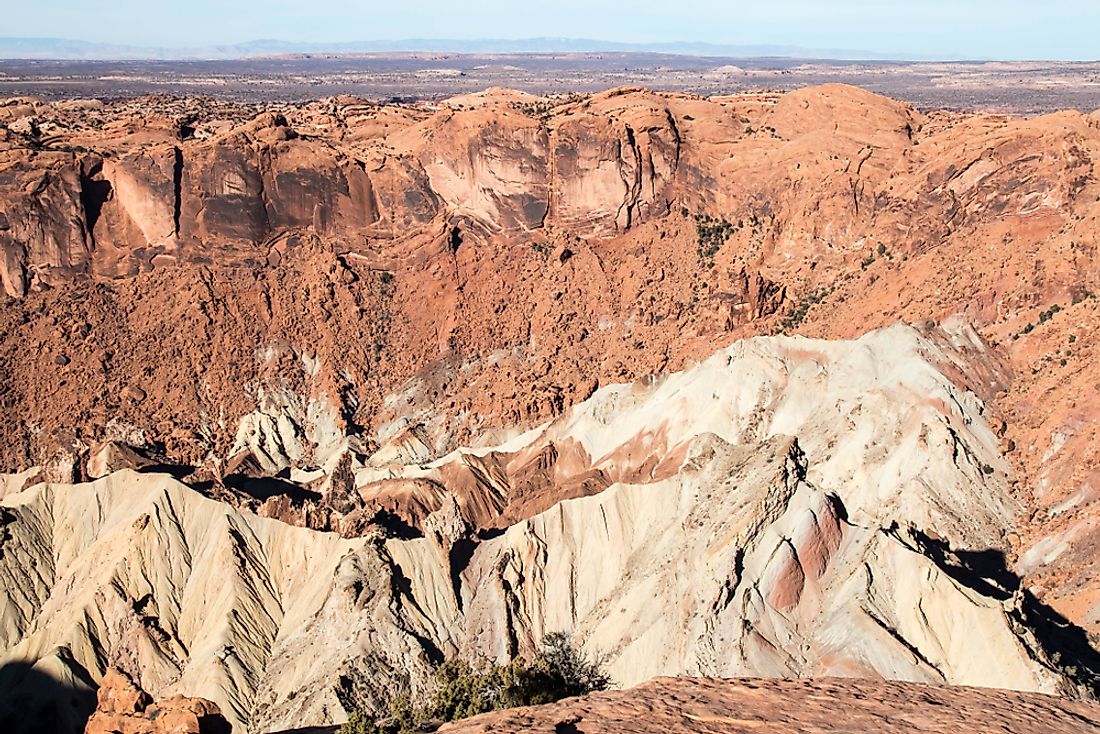The Different Types of Tectonic Landforms on Earth

Landforms resulting from tectonic activity are called tectonic landforms. Such features are produced primarily by the subsidence or uplift of the Earth’s crust. Mountains and plateaus are some examples of tectonic landforms. Some of the lesser known tectonic landforms on Earth are described below.
Sand Volcano
A sand volcano is a tectonic feature that appears like a raised cone of sand on a sandy surface. Such landforms are formed due to the ejection of sand from a central point onto a surface. The summit of such a volcano usually hosts a crater. The diameter of such volcanoes can vary widely from a few millimeters to several meters. Sand volcanoes are usually created during earthquakes, and soil liquefaction results in such formations.
Graben
A graben is a tectonic landform characterized by a valley flanked by a distinct escarpment on each side. A graben is formed when a block of land is displaced downward. Several graben usually occur parallel to each other, with horsts in between every two graben. The entire landform of graben and horsts represents the tectonically active state of the area. Crustal stretching and tensional forces give rise to these landforms, and often form a rift valley. The Lambert Graben in Antarctica is an example of this type of tectonic landform.
Horst
A horst is a raised fault block on the crust of the Earth, and is usually found between two graben. A horst is formed either by the lifting of land at the site of the horst or it simply appears raised as land on either side of it has moved downward due to tectonic activity to form a graben.
Dome
In geology, a dome is a rounded protrusion on the surface of the Earth. Such structures are formed due to several types of tectonic activities like refolding or post-impact uplift. The Upheaval Dome in Utah, USA is an example of a dome.
Mid-ocean Ridge
An underwater system of mountains that is formed due to tectonic activity is called a mid-water ridge. In such a system, the mountains remain connected in the form of chains, and the spine of the mountain system usually hosts a valley called a rift. Such mountain systems are often formed at the boundary between two tectonic plates.
Mud Volcano
A mud volcano is formed when mud, gases, and water erupt on the surface of the Earth. These volcanoes do not produce lava and are not necessarily formed due to magmatic activities. The size of mud volcanoes varies widely, and they can have a height ranging from 1 m to 700 m, and a width ranging between 1 m and 10 km. The mud of the volcano is basically hot water from deep within the Earth and subterranean mineral deposits that is pushed up to the surface due to tectonic activity. Usually, the material is forced up through fissures or faults on the Earth’s surface due to pressure differences below the ground.
Asymmetric Valley
An asymmetric valley is a type of tectonic landform which has a steeper slope on one side. More frequently, south-facing slopes are steeper than the opposite slopes at higher elevations. Such valleys are formed form when a large incised river crosses a strike-slip fault. One of the banks of the river gets renewed, while the other moves away from it. An asymmetrical valley can be seen at the point where the Yellow River passes through the Zhongwei-Tongxin fault.
Oceanic Trench
An oceanic trench is a narrow and long topographic depression on the sea floor. Trenches are the deepest parts of an ocean and represent convergent plate boundaries. Lithospheric plates approach each other at this point. Trenches have depths that are 3 to 4 km deeper than the surrounding floor. Challenger Deep in the Mariana Trench (Pacific Ocean) has the greatest ocean depth, at 36,201 ft below sea-level.
Rift Valley
A rift valley, as the name suggests, is a valley formed by tectonic activity at a geologic rift or fault. Rift valleys exist as a linear shaped valley amidst highlands and mountains. The valley forms in three stages. First, tensional forces lead to the development of cracks on the surface of the Earth. Second, the portion of the crust between two such cracks sinks. Finally, after subsidence a valley with steep sides is formed. This is known as a rift valley. The East African Rift is one of the best examples of a rift valley.
Other Types of Tectonic Landforms
Faceted and truncated spurs, fault scarps, and pull-apart basins are some of the other types of tectonic landforms found on the surface of the Earth.







